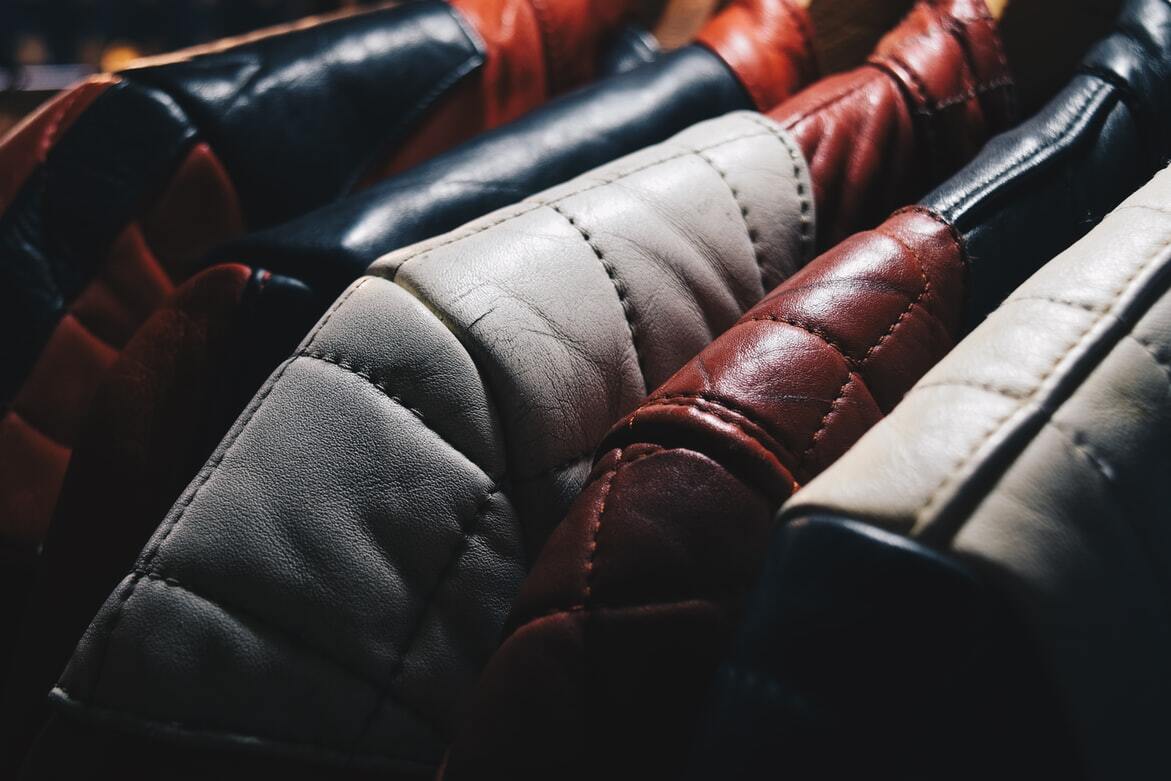Leather comes in various types according to quality, grain, cut and finishes. The available leather types are top-grain, full-grain, bicast, genuine and bonded. Types of leather can be divided into various categories depending on the qualities, grades, finishes, source animal, etc. There is vegan leather as well.
The leather also comes with different finishes, including brush-colored, aniline, semi-aniline, degrained, embossed, die-cut, metallic, embroidered, handworked, nubuck, Nappa, patent, oily, pigmented, split, printed, waxy, and suede. Each type and finish of leather has unique qualities beneficial for different uses. It is important to know and select the right type of leather with suitable finishing for your project to ensure the required result. An exclusive wholesale leather supplier mostly keeps stock of major leather types listed below to make you familiar with each genre.
The 5 major leather types in grading and qualities
The main types of leathers are segregated according to layers and volumes of the hide that stays behind in finished products after processing. The 5 leather types are full grain, top grain, split grain, genuine and bonded leather. The quality of leather also depends on several factors such as the breed of source animal, their living conditions, their feed and their activity. Like human skin, the quality of animal hides depends on the life of source animals. Following is little insight into these five main types of leather.
- Full Grain LeatherThis leather type’s outer layout, grain, is not buffed or sanded to remove the imperfections. Normally, only the hair is removed from the hide in full-grain leather. The grain generally has densely packed fibers that are finer, resulting in a very strong, durable surface that can withstand tough use.
Because it doesn’t undergo any sanding, the surface can have minor imperfections. These might be from where the source animal got cuts, abrasions and scrapes on the skin from everyday life. In manufacturing full-grain leathers, the least unblemished hides are most valued because they are rare and appealing to the sight.
The surface fibers give immense strength to full-grain leather and make it suitable for the uses such as footwear, saddlery and furniture. A patina (color change) is formed on the surface because the outer layer is not removed, which is very pleasing to the eyes. The water resistance of the surface is also increased in unprocessed leather. All these qualities make full-grain the highest quality leather in the world.
- Top Grain Leather
The cut of top-grain leather is similar to the full-grain, but the top layer is buffed or sanded to remove irregularities and imperfections in the finish. The buffing makes the leather pliable and softer, and multiple dyes and finishes can be applied to it. Although sanding gives a visual appeal to the outer surface, the strength and water resistance are removed to a large extent. Consequently, while top-grain leather is softer and more attractive than full-grain, its strength does not match the latter. This type of leather is often used in making leather goods such as handbags and wallets for its good looks and softness.
- Split Grain Leather
This type of leather is a layer cut from the hide at the lower levels of top grain. It is mostly the layer of the hide, which is just above the animal flesh. Although this type does not have the quality or the looks of top and full-grain leather, it is still useful in making quality leather material.
The natural outer layer of split-grain leather is not as tight, dense and valuable as the former two types. Therefore, split-grain leather is mostly used in leather goods that undergo thorough finishing processes such as embossed, colored and significant surface alterations. The finishings allow split-grain to offer some useful leather qualities while maintaining the surface material’s visual appeal and functionality required to make leather products.
- Genuine Leather
Genuine leather or corrected leather is taken from a random layer of the hide. The layer undergoes surface treatments of corrections to provide a uniform appearance. It is buffed to remove surface imperfections, painted or dyed to give color and stamped or embossed to bring the final look to the surface. The finishing process alters some preferred leather qualities, so we cannot consider it top quality. However, manufacturers use it to make belts and other such items.
- Bonded Leather
Bonded or reconstituted leather is like hot dogs or scrapple. This type of leather is made of scraps that are finely torn into shreds and bonded together using latex or polyurethane onto a fiber sheet or mesh. The ratio of leather in the mix varies greatly from as low as 10% to as high as 90%. The variation tremendously affects the aesthetic and functional properties of the final product. The bonded leather type is often spray painted to give it a finished color. This type can be embossed or pressed to make a specific leather style or grain appearance.
Final Thoughts
As mentioned in the article, leather is divided into many categories according to quality, cuts, finishes, and animals used to source the hide. However, the main segregation is done based on the grading of the top layer. Studying the above five main types of leather shows that full-grain leather is the top quality for its looks, strength and authenticity. Full-grain leather is generally stronger than the other types.
The hide is neither sanded to remove imperfections nor dyed or painted. The densely packed fine fibers on the surface make the leather durable and strong against even the toughest of uses. The smooth, flexible and dense surface wears very well to become more valuable and sought-after over time. However, bringing out the best in the leather depends on the project it is used for and the leather characteristics the manufacturers personally prefer to acquire. For example, if you do not require high-level strength for your leather products, you do not need the costly full-grain leather, and other lower-quality types are better for your use.
